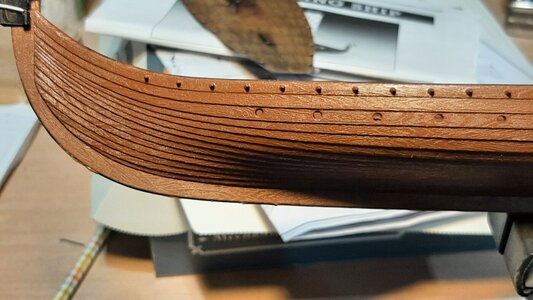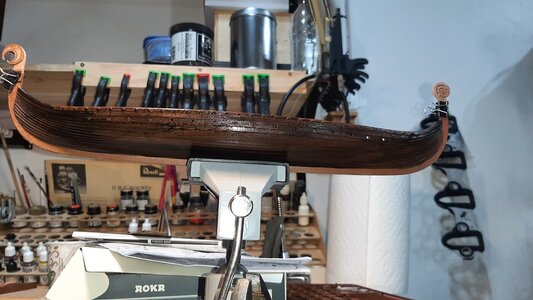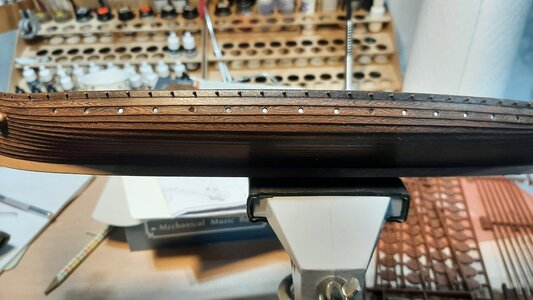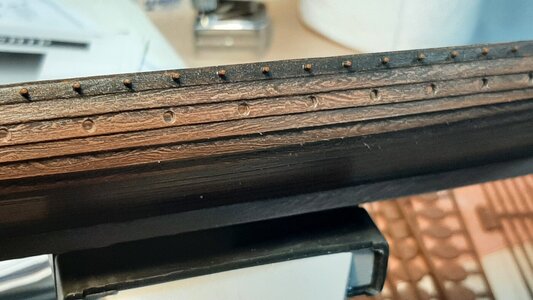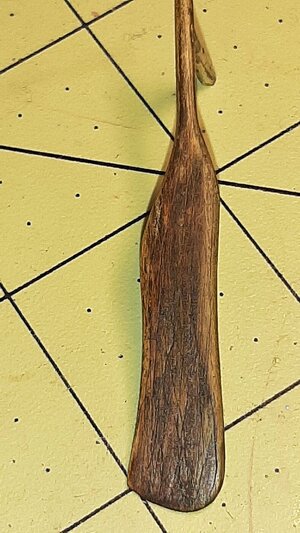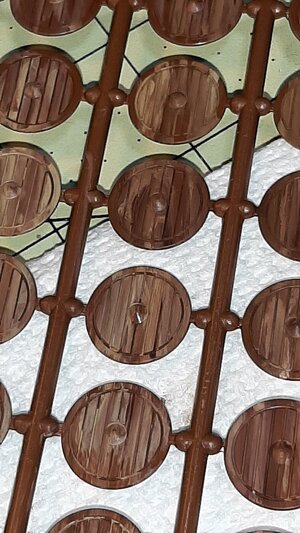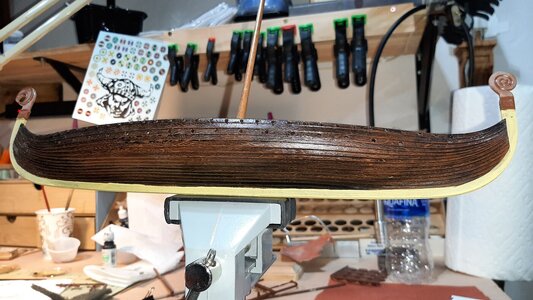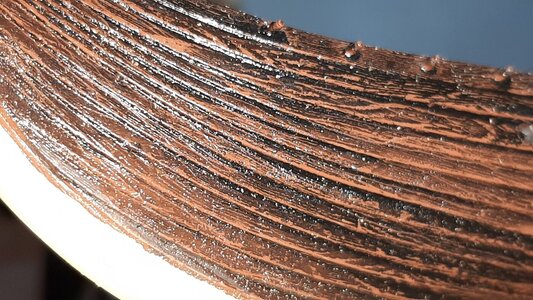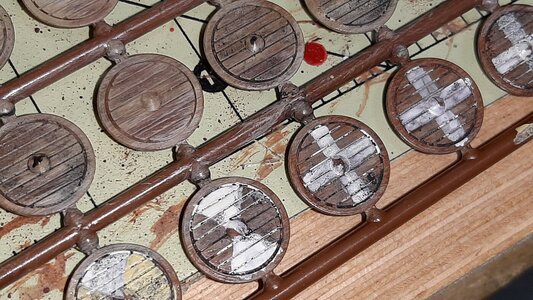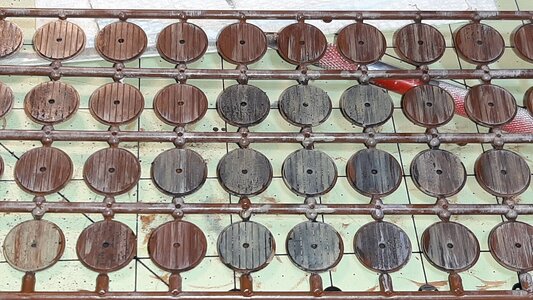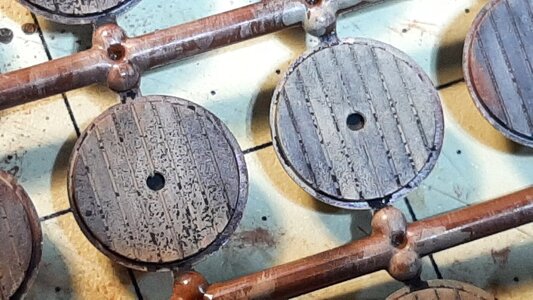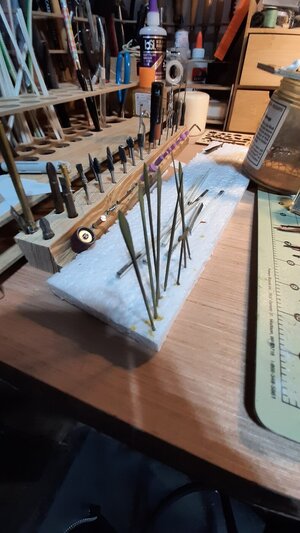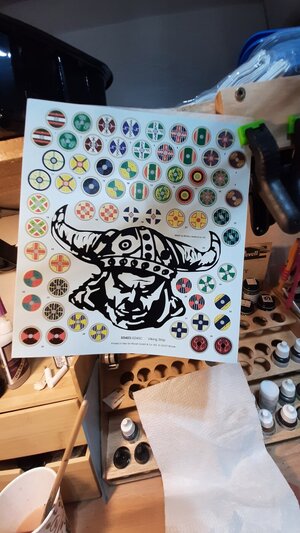Hello All,
Though I'm really wanting to try wooden ship modeling, I'm really a plastic guy...nearly all my modeling experience has been in styrene. This one presents a unique challenge because it's a material I'm most familiar with but I'm tasked with making it look like an entirely different material! This has been difficult so far, but I think I'm getting the hang of some techniques that might work. I can't claim to have thought up the methods, only that this is my own attempt.
The Revell Germany kit has good...if a tad heavy...wood grain and texture molded into this kit. The base brown color is useful in some circumstances but I do wish they had mixed up the molding color a bit. I started experimenting on the main (only) deck with some Vallejo acrylics several years ago when I started the kit. It got boxed up for a couple moves until I played around with some artists oil paints on it today. I sanded the acrylic base (the color was a buff or tan of some sort) to reveal some of the darker wood grain below. Using dabs of Ivory Black, Burnt Sienna, and Titanium White, along with some linseed oil, I was able to work some color and variation into the existing acrylic base. I then just wiped it off to lighten and reveal some of the lighter graining below. I was careful to get some good darks deep into the recesses molded into the deck as well. Overall I'm pleased with the outcome thus far.
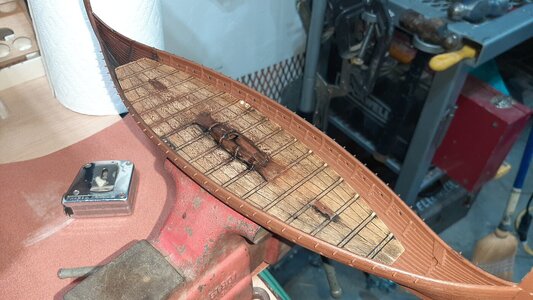
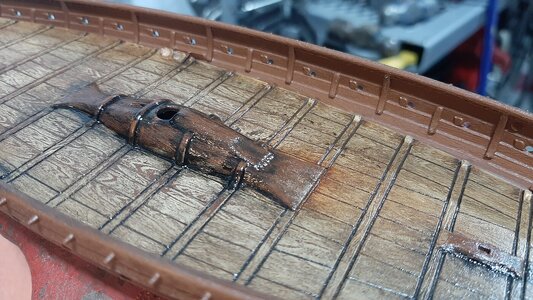
Since I'm feeling confident with my plans and technique for trying to simulate wood on the plastic, so I'm starting to think about the next construction phases of the model.
The kit mast is truly miserable. Aside from being bent out of the box and barely able to hold it's shape against gravity, I shudder to think what the meager amount of rigging tension that will be imposed on it would do to it. On top of that it is smooth and shiny, lacking any kind of texture or simulated wood grain. Usually that simulated grain is over the top, an occurrence that is all-too prevalent on this particular kit, but then a major piece like the mast is left devoid of any character at all. Odd.
For a suitable replacement I only had to look at my junk brushes I use for weathering. One was a good diameter, length, and shape, not to mention having beautiful and fine grain. The cast-in rigging fitting at the top of the kit mast is nice, but nothing that I couldnt duplicate with some wire, aluminum tubing, and CA. I needed to build a new top portion of the mast above the fitting, which I accomplished by turning a dowel of bamboo (I think, a cooking skewar of some sort) down in my drill press with a file and sandpaper. The sanded portions of the mast will get some manner of stain to match the darker color of the mast, and the rigging fitting will likely be painted in some type of steel/rust combination.
Thanks for looking.
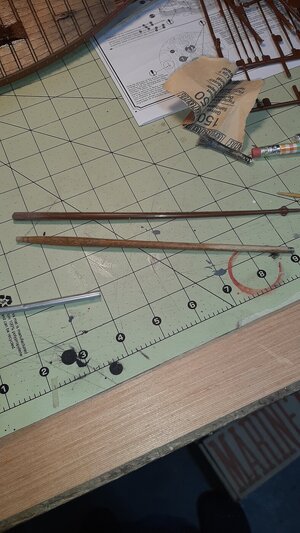
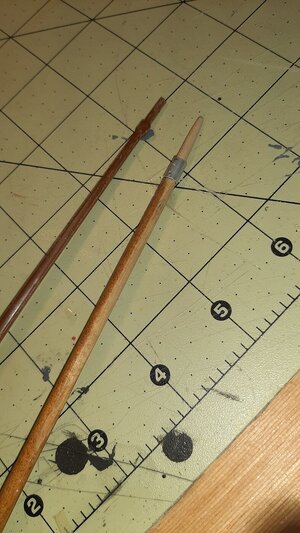
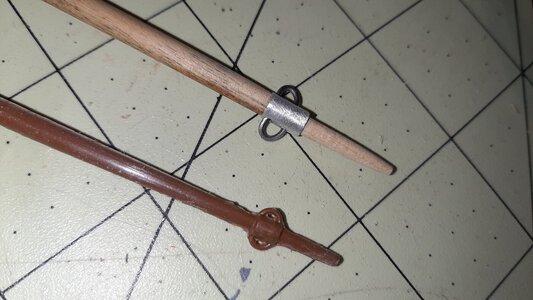
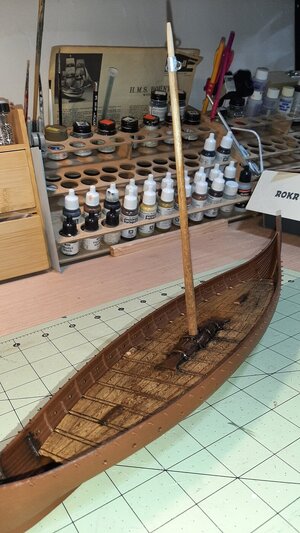
Though I'm really wanting to try wooden ship modeling, I'm really a plastic guy...nearly all my modeling experience has been in styrene. This one presents a unique challenge because it's a material I'm most familiar with but I'm tasked with making it look like an entirely different material! This has been difficult so far, but I think I'm getting the hang of some techniques that might work. I can't claim to have thought up the methods, only that this is my own attempt.
The Revell Germany kit has good...if a tad heavy...wood grain and texture molded into this kit. The base brown color is useful in some circumstances but I do wish they had mixed up the molding color a bit. I started experimenting on the main (only) deck with some Vallejo acrylics several years ago when I started the kit. It got boxed up for a couple moves until I played around with some artists oil paints on it today. I sanded the acrylic base (the color was a buff or tan of some sort) to reveal some of the darker wood grain below. Using dabs of Ivory Black, Burnt Sienna, and Titanium White, along with some linseed oil, I was able to work some color and variation into the existing acrylic base. I then just wiped it off to lighten and reveal some of the lighter graining below. I was careful to get some good darks deep into the recesses molded into the deck as well. Overall I'm pleased with the outcome thus far.


Since I'm feeling confident with my plans and technique for trying to simulate wood on the plastic, so I'm starting to think about the next construction phases of the model.
The kit mast is truly miserable. Aside from being bent out of the box and barely able to hold it's shape against gravity, I shudder to think what the meager amount of rigging tension that will be imposed on it would do to it. On top of that it is smooth and shiny, lacking any kind of texture or simulated wood grain. Usually that simulated grain is over the top, an occurrence that is all-too prevalent on this particular kit, but then a major piece like the mast is left devoid of any character at all. Odd.
For a suitable replacement I only had to look at my junk brushes I use for weathering. One was a good diameter, length, and shape, not to mention having beautiful and fine grain. The cast-in rigging fitting at the top of the kit mast is nice, but nothing that I couldnt duplicate with some wire, aluminum tubing, and CA. I needed to build a new top portion of the mast above the fitting, which I accomplished by turning a dowel of bamboo (I think, a cooking skewar of some sort) down in my drill press with a file and sandpaper. The sanded portions of the mast will get some manner of stain to match the darker color of the mast, and the rigging fitting will likely be painted in some type of steel/rust combination.
Thanks for looking.








